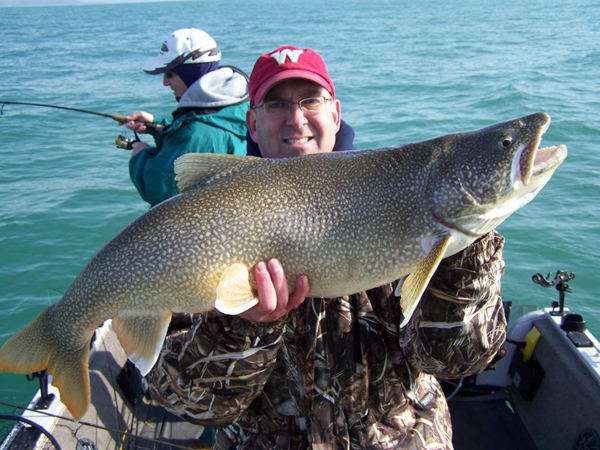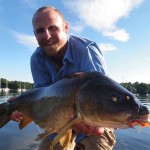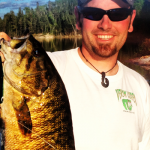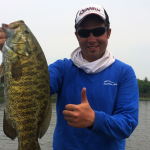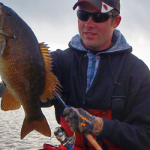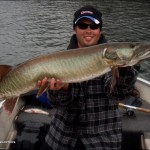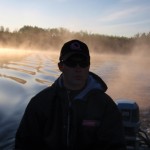By: Todd Wendorf – Date Posted: March 13, 2012
Depending on where you live the “warmer” weather of March can mean anything from late ice crappies to pre-spawn walleyes to migrating steelhead. In about any location in the upper Midwest it means it’s time to grab a rod and reel and find something to fish for. The problem is … in many locations lakes are still covered with ice, rivers are high and muddy, and many fish species are still out of season.
As an angler who gets a bad dose of spring fever by the end of February, I have a hard time sitting and waiting for ice and mud to go away, or for the first Saturday in May to come around. As a result, I have to get my fishing “fix” by early March or I’m going to be really hard to live with and my wonderful wife certainly doesn’t deserve that! So for her sake, I’ve just got to hit the water somehow, somewhere.
I absolutely love fishing for steelhead and brown trout in the Lake Michigan tributaries in spring, but early March can be very frustrating because it’s transition time. River conditions are difficult, spring run fish may not be in yet, and making a 2 hour drive at 4:00 a.m. to find the wrong conditions can be very aggravating. Fortunately, a few years ago, a friend of mind recommended that I try something different. “Give spring lakers a try,” he said. “They’re a blast catching on jigs and walleye gear.” Once assured that my friend had not been drinking, I asked a few more questions and decided it might be a good idea to pursue.

The Spring Alternative
For most folks, lake trout fishing means deep water, heavy lines, trolling spoons on down riggers, and Canada. To a small group of anglers it now also means shallow water, light lines, jigs, and the western basin of Lake Michigan along the Wisconsin coastline. To those who have tried it first hand, it also means a catching fish that bite like a walleye but fight like a small Volkswagen.
So how does one go about learning this fishery? Some anglers would undoubtedly prefer to spend hours searching for fish on their own and may even eventually be rewarded with a nice catch of fish. I took a shortcut and hired one of the best guides in the country to teach me how to do it. Eric Haataja of Big Fish Guide Service and the co-host of the new fishing television show “Big Fish 365” took me out a few years ago and provided me with a ton of good information and a couple of sore forearms by the time the day was done. What I’ll try to do over the next few pages is try to pass that information along to you as well as I can. I also visited with Eric a few days ago and received an update on his techniques and the current state of the fishery.
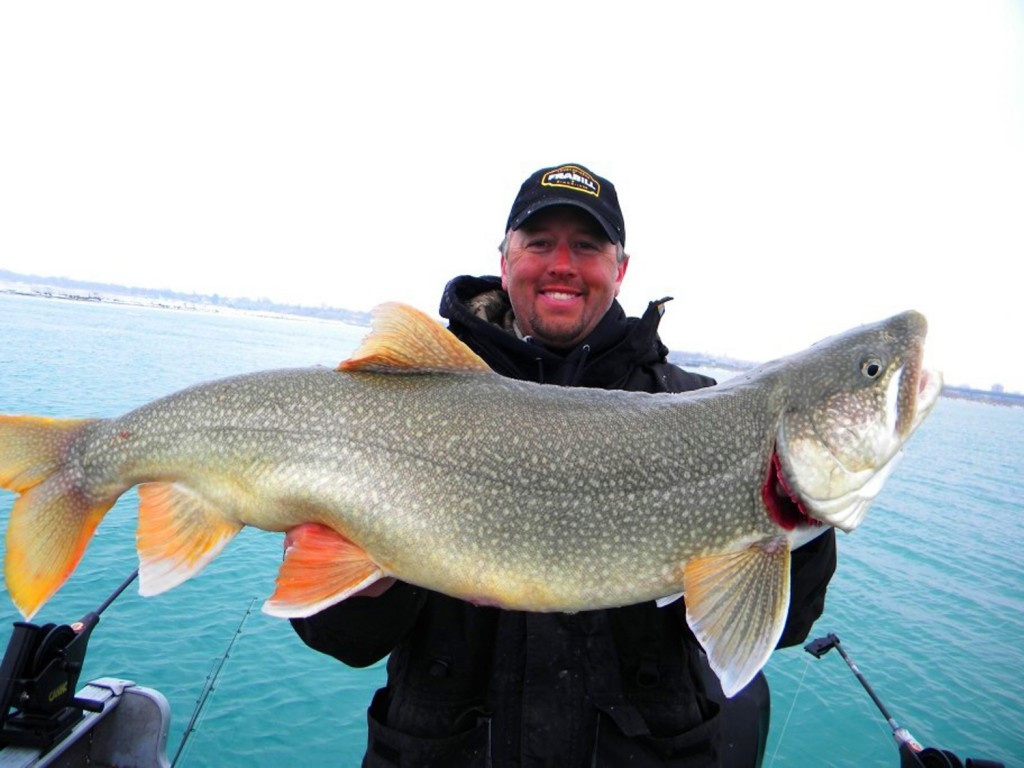
When, Where, and How
Like most other Great Lakes species, lake trout are very temperature conscious. In general they prefer colder water than their cousins in the salmonoid family, with temperatures ranging from 35 to 48 degrees. Conditions are such in the spring that the come close enough to the shoreline that anglers can reach them in 20 to 40 feet of water. Cool water, combined with an abundance of forage in the form of gobies and gizzard shad, provide everything hungry lake trout are looking for; comfortable temperature and a smorgasbord of desired baitfish right in front of their noses. The key, of course, like it is with all salmonoids, is to find the baitfish. The boulder lined breakwalls of the harbors, in addition with the food rich waters of the tributaries emptying into the lake at the harbor mouths, mean gobies. Tons of them! In March and early April, gobies will lead to lake trout. Locate the harbor mouths, search the current edges and nearby boulders, and your going to find fish.
“I’ve caught spring lakers up and down the Wisconsin shoreline, from ports in Racine to Milwaukee, to Port Washington to Two Rivers,” says Haataja. “I’ve even caught them as far north as Sturgeon Bay. They tend to gather near harbor mouths and along rocky breakwalls and near shore humps … anywhere that gobies can be found.”
Lakers don’t generally “slash feed” like salmon will. In other words, they won’t follow a large school of alewife and slash through it grabbing unexpecting prey. “You need to rely on your electronics when searching for these fish,” Haataja added. “They tend to hug the bottom in search of food. Once you find them, jig the lower half of the water column. They won’t generally feed higher because their prey lives near the bottom.”
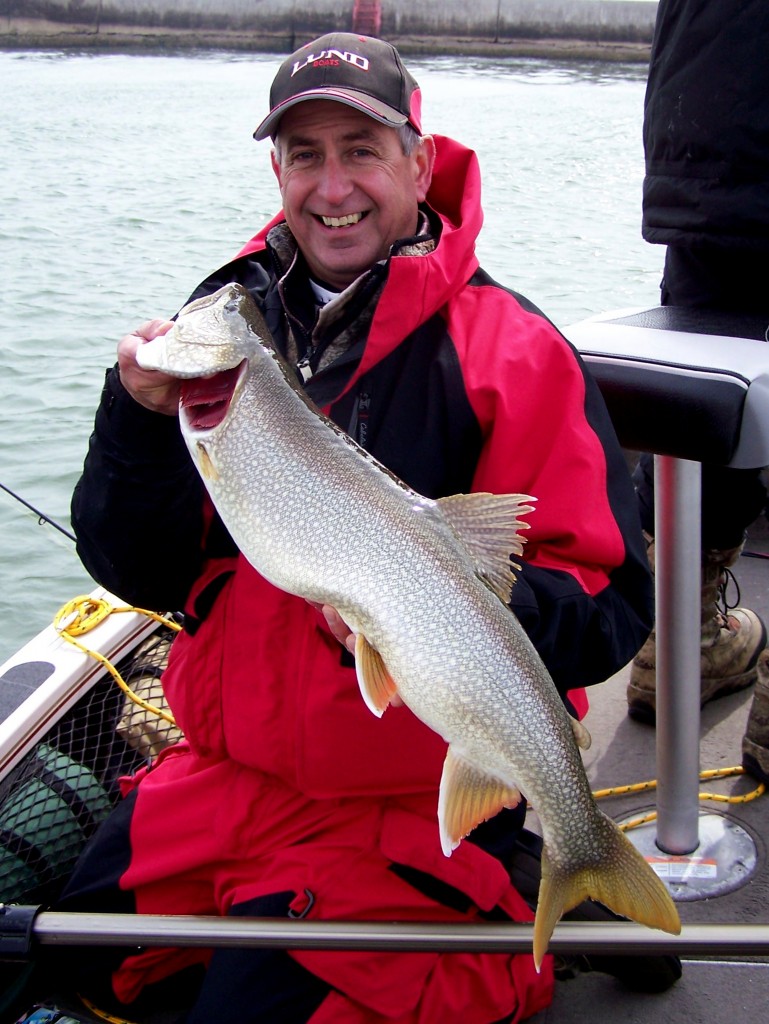
Tools of the Trade
In terms of equipment, a good medium action 7’ graphite rod matched up with 15 lb. test braid and a 10 lb. test fluorocarbon leader will give you the sensitivity to feel the bite and the backbone to set the hook and land the fish. Northland’s “Big Eye” jigs in ¼ to ½ ounce and pearl or chartreuse 4” Gulp Minnows or 5” Gulp Jerk Shad are the bait of choice. But don’t be afraid to experiment a little. I’m looking forward to trying Stankx Baits 4.75” Flukez in “shadtastic” this spring. Jigging spoons can also produce under the right condition.
You’ll want a good, large net that will allow you to keep the fish in the water while unhooking it to avoiding injury to the fish. I highly recommend Frabil’s new “Conservation Series” as it’s designed to limit injury to the fish prior to releasing it.
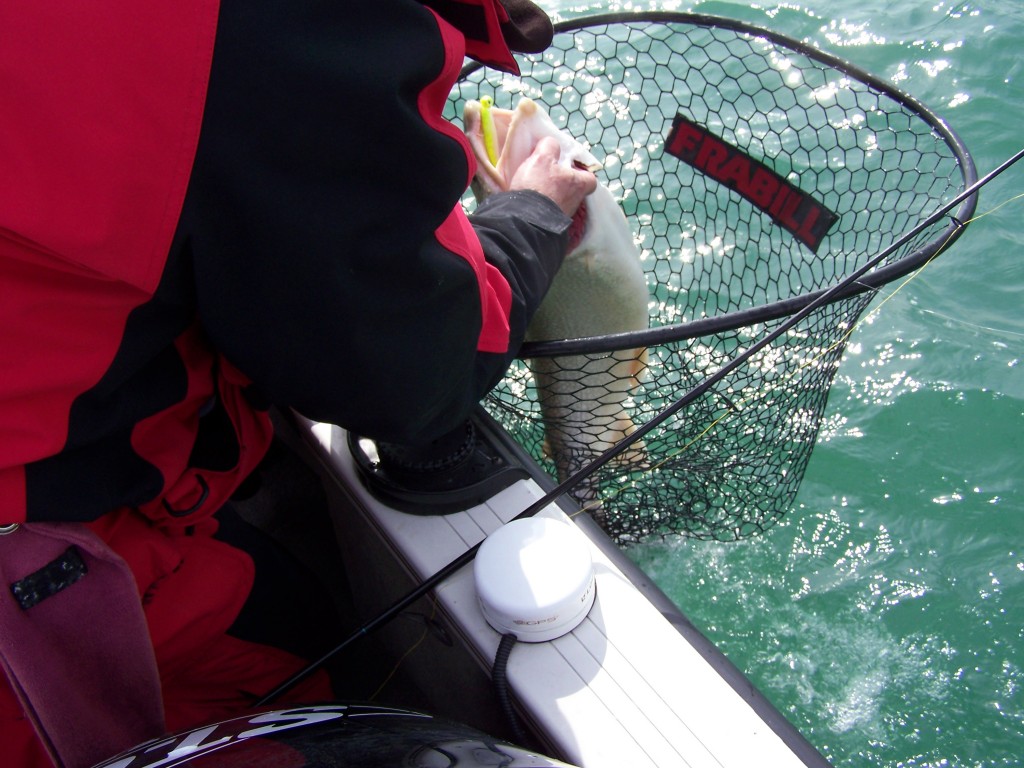
The Future of the Fishery
Lake Trout are a beautiful, hard fighting fish that can grow to large sizes. Because of their desire to feed on gobies near the shorelines up and down the state, they are also very vulnerable. In Wisconsin the fish are protected by a closed season from October 31 to March 1, but anglers also need to understand the uniqueness of the fish they’re pursuing during the open season.
“Conservation is the key to growing monster lake trout and establishing a significant population near shore. These fish can live 50 to 60 years and can grow to 40 lbs or more” says Haataja. “Being so close to the shoreline in the spring makes them very susceptible to harvest. We have a world class fishery with these Lake Trout. Maintaining this fishery means releasing these beautiful fish to live another day.”
Your Next Step?
Lake trout season in Wisconsin opens within days of the release of this issue of Fishing-Headquarters magazine. Cabin fever probably started for you some time ago. The itch to fish is most likely driving you crazy. I’d strongly encourage you to scratch it by getting out on the water as soon as possible. If you want to experience this amazing fishery for the first time, I’d also encourage you to give Eric Haataja a call and book a trip with him. He’ll provide all of the equipment, put you on the fish, and teach you more about catching lake trout in one day than I could in a complete volume of magazines.
Prepare yourself for battle when heading out to the harbor mouths. I wasn’t kidding when I said they fight like a small Volkswagen. During my trip with Eric, I was fortunate enough to tie into an 18 lb. monster that took well over a half hour to land. There’s no promise that you’ll get a fish that big. Instead, the odds are decent that you’ll land one much bigger than that!
Enjoy this amazing fishery, and as always … let them go so they can grow!
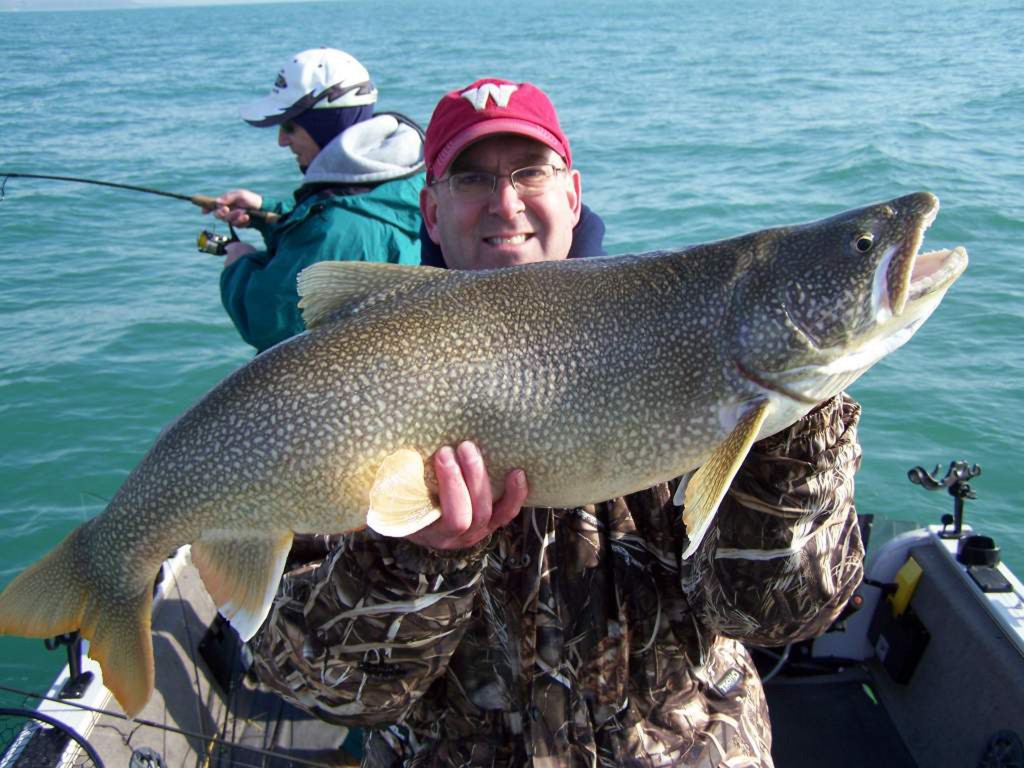
Todd Wendorf grew up in Northern Wisconsin and now calls McFarland, WI home. He is an avid bass fisherman who specializes in shore fishing, wading, float tubing, and kayak fishing. When not chasing big largemouths, Todd frequently fishes for steelhead and brown trout in Southeastern Wisconsin harbors & tributaries. You can visit Todd online at http://www.needtofishmore.blogspot.com/


